
Journal of the Korean Society of Combustion
Scope & Guideline
Championing Sustainable Combustion Practices
Introduction
Aims and Scopes
- Combustion Mechanisms and Modeling:
The journal emphasizes the development and application of advanced combustion models, particularly for complex fuel types like ammonia and hydrogen. Researchers employ numerical simulations and machine learning to predict combustion behavior and emissions. - Emission Control and Environmental Impact:
A significant aim is to explore techniques for reducing harmful emissions such as NOx and CO2 from combustion processes. This includes studies on flue gas recirculation and the use of alternative fuels to minimize environmental footprints. - Innovative Fuel Technologies:
The journal highlights research on alternative and zero-carbon fuels, including ammonia and hydrogen. This area focuses on the combustion characteristics, performance, and feasibility of these fuels in existing and new combustion systems. - Combustion Stability and Dynamics:
Research on combustion instability, including thermoacoustic dynamics and flame stability, is a core focus. The journal publishes studies that investigate the factors affecting stability in various combustion configurations, including gas turbines and boilers. - Experimental and Numerical Investigations:
A balanced approach combining experimental studies and numerical simulations is prevalent. The journal encourages comprehensive investigations that validate theoretical models against experimental data.
Trending and Emerging
- Ammonia and Hydrogen as Alternative Fuels:
Research on ammonia and hydrogen combustion is rapidly increasing, driven by the need for carbon-neutral fuel options. The journal showcases studies focused on combustion characteristics, emissions, and the integration of these fuels into existing systems. - Machine Learning and Advanced Modeling Techniques:
There is a growing trend towards the use of machine learning and artificial intelligence to enhance combustion modeling. This approach aims to improve predictive capabilities and optimize combustion processes in real-time. - Combustion Instability and Noise Control:
Emerging research emphasizes understanding and controlling combustion instabilities, particularly in gas turbines. This is critical for enhancing operational efficiency and reducing noise pollution. - Flame Stability in Advanced Combustors:
There is heightened interest in studying flame stability across various combustor designs, including staged and lean-premixed systems. This research is essential for developing more efficient and cleaner combustion technologies. - Integration of Renewable Energy Sources:
The journal is increasingly publishing studies that explore the integration of renewable energy sources with combustion systems, particularly in hybrid setups that aim to enhance overall energy efficiency and sustainability.
Declining or Waning
- Traditional Fossil Fuel Combustion:
Research focusing solely on traditional fossil fuels like diesel and coal combustion has decreased. This shift reflects a growing emphasis on cleaner energy sources and the urgent need for sustainable alternatives. - Basic Combustion Chemistry:
While foundational studies in combustion chemistry are still relevant, there has been a noticeable decline in simplistic approaches lacking integration with advanced modeling or practical applications, as researchers prioritize more complex and applicable studies. - Conventional Engine Performance Studies:
Studies solely focused on the performance of conventional combustion engines, without considering alternative fuels or emissions reduction methods, have waned. The field is moving towards hybrid or alternative fuel systems.
Similar Journals
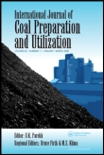
International Journal of Coal Preparation and Utilization
Pioneering advancements in coal preparation for a sustainable tomorrow.The International Journal of Coal Preparation and Utilization, published by Taylor & Francis Inc, serves as a pivotal platform dedicated to advancing research and knowledge in the fields of coal preparation and utilization. Since its inception in 1999, the journal has maintained a strong commitment to facilitating scholarly discourse among professionals and researchers engaged in coal technology, energy engineering, and environmental concerns. With a solid reputation reflected in its Q2 quartile rankings across multiple categories including Chemical Engineering, Energy Engineering and Power Technology, and Geotechnical Engineering, this journal continues to make significant contributions to the understanding and application of coal and its related technologies. The journal provides both subscription and open access options, ensuring wide accessibility to its rich repository of peer-reviewed articles. As the industry evolves, the International Journal of Coal Preparation and Utilization remains vital for stakeholders interested in the innovative practices that promote sustainable energy solutions.
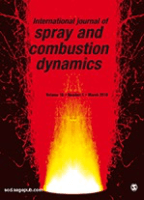
International Journal of Spray and Combustion Dynamics
Fueling Insights for a Sustainable FutureWelcome to the International Journal of Spray and Combustion Dynamics, a premier publication dedicated to advancing the understanding of spray and combustion phenomena in various applications. Published by SAGE Publications Inc, this journal serves as a vital resource for researchers and professionals in the fields of Automotive Engineering, Energy Engineering, and Physics, boasting a commendable Q2 ranking in its categories for 2023. With an ISSN of 1756-8277 and E-ISSN 1756-8285, it engages a global audience in the investigation of innovative solutions to energy efficiency and combustion processes. Operating from the United Kingdom, this journal is a key player in disseminating high-quality research findings from 2011 to 2024, making it a go-to source for those seeking to enhance their knowledge and contribute to cutting-edge developments in these dynamic areas of study. Researchers, practitioners, and students alike will find this journal invaluable for staying informed and connected to the latest advancements in spray and combustion dynamics.

Journal of Engineering Thermophysics
Transforming thermal challenges into engineering triumphs.Journal of Engineering Thermophysics, published by PLEIADES PUBLISHING INC, is a premier academic journal dedicated to advancing the field of thermophysics and its applications across a variety of engineering disciplines. With an ISSN of 1810-2328 and an E-ISSN of 1990-5432, this journal offers an essential platform for researchers and professionals to disseminate cutting-edge findings on the interplay between thermal processes and engineering systems. As of 2023, it is recognized within the Q3 category in key fields such as Condensed Matter Physics, Energy Engineering and Power Technology, Environmental Engineering, and Modeling and Simulation. Moreover, the journal contributes to an important dialogue in the environmental sciences, ranking 111 out of 197 in Environmental Engineering, and positions itself prominently within the academic landscape from its establishment in 2007. Although currently not an open-access journal, it facilitates a selective yet impactful communication of research that drives innovation and knowledge in the thermal sciences. For those engaged in understanding the thermal dynamics essential for sustainable engineering solutions, the Journal of Engineering Thermophysics is the go-to resource for published research, reviews, and advancements in the field.
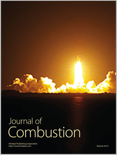
Journal of Combustion
Charting New Territories in Combustion ScienceJournal of Combustion is a premier academic journal dedicated to the field of combustion science and technology, published by HINDAWI LTD. With an ISSN of 2090-1968 and an E-ISSN of 2090-1976, the journal has been an open-access platform since 2008, ensuring that cutting-edge research is accessible to all. Based in the United States at Adam House, 3rd Flr, 1 Fitzroy Sq, London W1T 5HF, England, the journal publishes articles spanning various relevant disciplines, contributing to knowledge in Chemical Engineering, Fuel Technology, and Energy Engineering. As of 2023, it ranks in the Q3 quartile in Chemical Engineering (miscellaneous) and Fuel Technology, and in Q4 in Condensed Matter Physics and Energy Engineering and Power Technology, highlighting its growing impact and relevance in these fields. Researchers will find valuable insights as the journal converges its findings from 2010 to 2024. With a focus on promoting innovative approaches and exploring new frontiers in combustion research, the Journal of Combustion continues to be an essential resource for academics, professionals, and students committed to advancing the understanding and application of combustion processes.
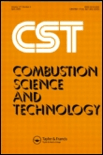
COMBUSTION SCIENCE AND TECHNOLOGY
Pioneering the Future of Energy and CombustionCOMBUSTION SCIENCE AND TECHNOLOGY, published by Taylor & Francis Inc, is a pivotal journal in the fields of Chemical Engineering and Chemistry, with a robust history spanning from 1969 to 2024. With an established impact factor and a strong reputation reflected in its Q2 ranking in both Chemical Engineering and Chemistry, this journal serves as an essential resource for researchers and professionals dedicated to the intricacies of combustion processes and energy technologies. The journal also holds commendable rankings in Energy Engineering, Fuel Technology, and Physics and Astronomy, showcasing its interdisciplinary relevance. While currently not an open-access publication, it offers a wealth of knowledge through its meticulously peer-reviewed articles, which are crucial for advancing understanding and innovation in combustion science. With a commitment to promoting rigorous research and fostering scholarly communication, COMBUSTION SCIENCE AND TECHNOLOGY is indispensable for anyone seeking cutting-edge insights into combustion phenomena and their applications in various engineering fields.

Russian Journal of Physical Chemistry B
Pioneering research in chemical science.Russian Journal of Physical Chemistry B, published by MAIK NAUKA/INTERPERIODICA/SPRINGER, serves as a vital platform for the dissemination of novel research in the field of physical and theoretical chemistry. With an ISSN of 1990-7931 and an E-ISSN of 1990-7923, this journal has established itself in the academic landscape since its inception in 2008, continuing to publish groundbreaking studies that push the boundaries of chemical research through 2024. Ranked in the Q3 category in Physical and Theoretical Chemistry, it holds a Scopus Rank of 139/189, showcasing its significance despite a competitive field. The journal does not currently offer open access but remains dedicated to advancing knowledge and innovation within its niche, fostering collaboration among chemists, researchers, and educators. As a valuable resource for those seeking to stay abreast of the latest developments and theoretical advancements, the Russian Journal of Physical Chemistry B is an excellent choice for professionals and students alike.

COMBUSTION EXPLOSION AND SHOCK WAVES
Fostering Collaboration for Groundbreaking Research in CombustionCOMBUSTION EXPLOSION AND SHOCK WAVES, published by MAIK NAUKA/INTERPERIODICA/SPRINGER, is a peer-reviewed journal that has been a cornerstone in the fields of combustion science and shock wave dynamics since its inception in 1965. With a broad scope encompassing chemical engineering, energy technology, and physics, this journal plays a pivotal role in disseminating groundbreaking research that drives advancements in both theory and application. Despite its classification in the third quartile across several categories as of 2023, the journal continues to attract contributions that address critical challenges and innovations in combustion-related phenomena. Researchers and professionals across multiple disciplines are encouraged to submit their findings, as the journal provides a valuable platform for sharing knowledge and fostering collaboration. The editorial board is committed to maintaining high standards of quality and relevance, which is reflected in its ongoing influence in these interdisciplinary and rapidly evolving fields. While the journal is not open access, it offers a wealth of insights and scholarly work that is vital for both academic inquiry and practical applications. From the vibrant heart of New York City, COMBUSTION EXPLOSION AND SHOCK WAVES aims to inspire and inform, serving as an essential resource for those dedicated to understanding and innovating in the realm of combustion science.
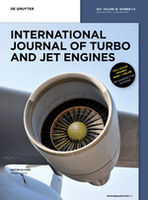
INTERNATIONAL JOURNAL OF TURBO & JET-ENGINES
Fueling Progress in Aerospace Engineering DiscoursesINTERNATIONAL JOURNAL OF TURBO & JET-ENGINES, published by WALTER DE GRUYTER GMBH, is an esteemed academic journal dedicated to the field of aerospace engineering, specifically focusing on the innovative development and application of turbo and jet engine technologies. Established in 1985, this journal has maintained its commitment to advancing scholarly research and discussion, attracting contributions from leading experts across the globe. With a Scopus rank of #91 out of 153 in the field of Aerospace Engineering, placing it in the 40th percentile and categorized in Q3 for 2023, the journal provides a vital platform for disseminating high-quality research findings and insights into evolving engine technologies. Although it follows a subscription model, its rigorous peer-review process ensures that published articles contribute significantly to the body of knowledge in aerospace engineering and related disciplines. For researchers, professionals, and students alike, the INTERNATIONAL JOURNAL OF TURBO & JET-ENGINES stands as a crucial resource for staying updated on the latest advances and trends in turbojet and turbofan systems.
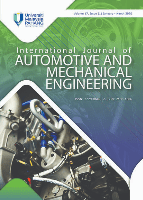
International Journal of Automotive And Mechanical Engineering
Connecting Global Minds in Engineering ExcellenceThe International Journal of Automotive and Mechanical Engineering (IJAME), published by Universiti Malaysia Pahang, serves as a premier platform for the dissemination of cutting-edge research in the fields of Automotive and Mechanical Engineering. Established in 2010, this Open Access journal not only ensures that high-quality research is freely accessible to the global community but also reflects its commitment to advancing knowledge in these crucial engineering domains. With an impressive standing in the 2023 Scopus Ranks, achieving a Q3 ranking in both Automotive Engineering and Mechanical Engineering, IJAME proudly showcases a diverse range of articles that address contemporary challenges and innovations. Positioned in Malaysia and aimed at researchers, professionals, and students alike, this journal invites contributions that explore the intersection of theory and practice within automotive technologies and mechanical design. Join a growing international community that is shaping the future of engineering through open collaboration and knowledge sharing.

JOURNAL OF ENGINEERING PHYSICS AND THERMOPHYSICS
Advancing the Frontiers of Engineering Physics and ThermophysicsJOURNAL OF ENGINEERING PHYSICS AND THERMOPHYSICS, published by Springer, is a vital resource for researchers and professionals in the fields of engineering physics and thermophysics. With an ISSN of 1062-0125 and an E-ISSN of 1573-871X, this esteemed journal has been disseminating high-quality research since its inception, covering critical advancements in both condensed matter physics and various engineering disciplines. Despite its classification within the third quartile in both Scopus categories for 2023, the journal remains a significant conduit for innovative studies that push the boundaries of knowledge in thermal and physical engineering, with converged years spanning from 1992 to 1997 and 2004 to 2024. The journal does not offer open access, which means subscribers and institutions have exclusive access to its rich content. As the field continues to evolve, JOURNAL OF ENGINEERING PHYSICS AND THERMOPHYSICS plays an essential role in fostering scholarly discussions and supporting the academic community in tackling contemporary engineering challenges.